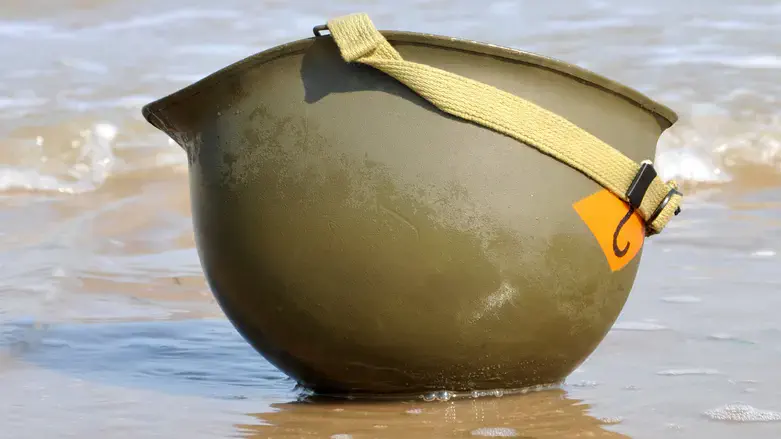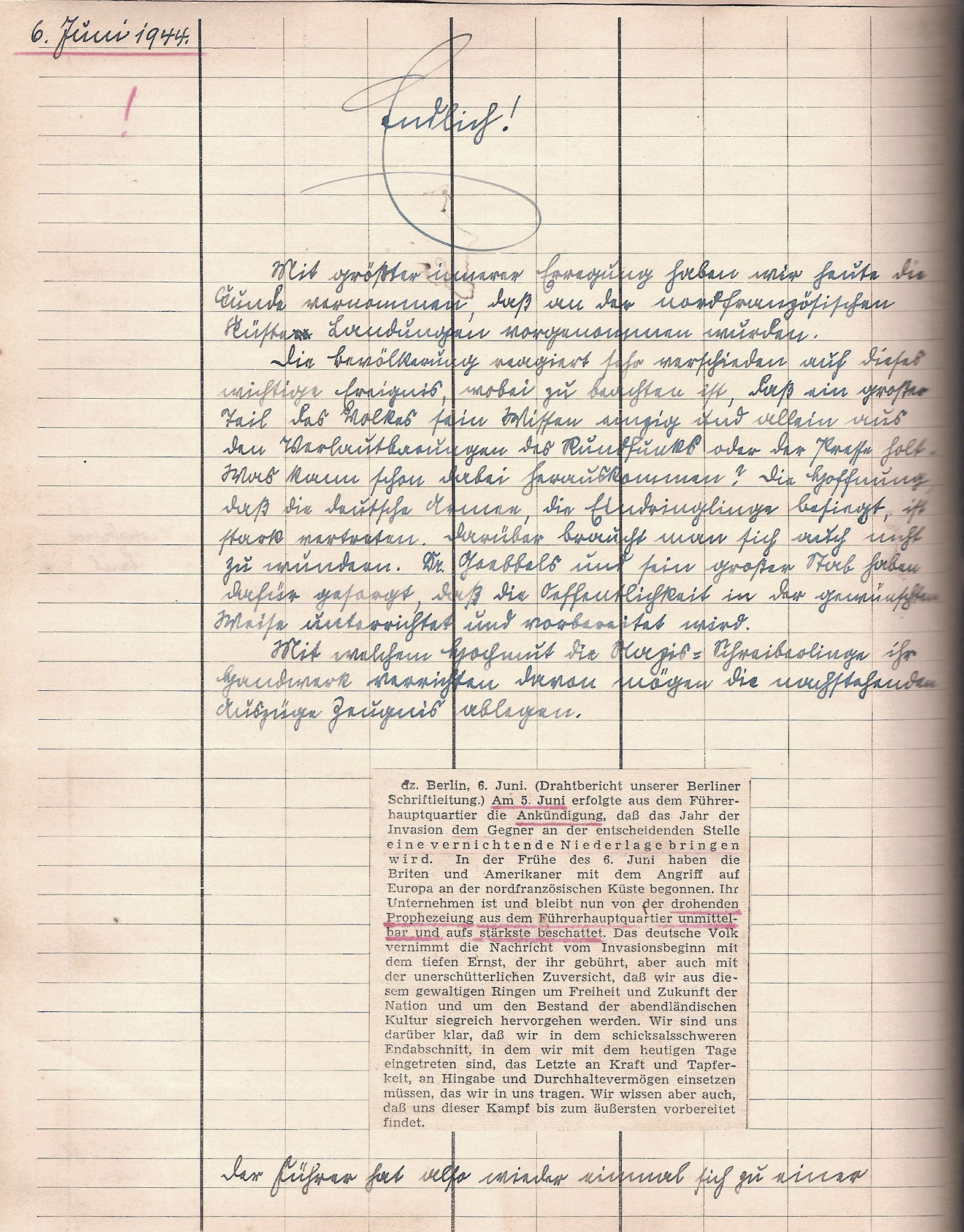
In a series of surprise attacks and quick victories, starting with Poland in 1939 and ending in June 1940 with the fall of France, the German dictator Adolf Hitler wrote a new chapter on terrorism as he made himself lord of Western Europe.
Four years later, on June 6, 1944, in a campaign fittingly called “Operation Overlord,” General Dwight Eisenhower led the largest amphibious assault in history across the English Channel and onto a 50-mile stretch of Normandy’s coastline, divided into five sectors: Utah, Omaha, Gold, Juno, and Sword beaches.
Protecting the coast was Hitler’s formidable Atlantic Wall. Each beach presented unique challenges, from steep cliffs to heavily fortified bunkers bristling with machine guns, artillery, and mines.
In a letter to General George C. Marshall in early 1944, Eisenhower expressed confidence in the coming operation but noted the potential for high casualties: “We are not counting on a walkover,” he wrote.
The assault succeeded, but witnesses said the "very water turned red" and Allied troops suffered thousands of casualties breaking through Germany’s defenses; moreover, there were several months of intense and deadly fighting ahead before they could cross the Rhine and enter Germany and fully liberate Europe.
Impatiently awaiting their own liberation by the Allies was a small percentage of Germans in the Third Reich who had resisted their Führer’s hypnotic speeches and turned a deaf ear to the misinformation and antisemitism by Propaganda Minister Joseph Goebbels.
Justice inspector and diarist Friedrich Kellner was one of those resisters:
“Hitler has ordered Field Marshal Rommel to inspect our fortifications on the French coast,” wrote Kellner in December 1943. “Despite Rommel, who was forced to retreat in North Africa, the fabled Atlantic Wall will not withstand the coming American and English attacks,” Kellner predicted. “Germany’s ‘invincible power’ will succumb to the Allies’ superior strength. The well-deserved defeat--and the end of terror--moves closer!”
During the brief time of the Weimar Republic, Friedrich Kellner had campaigned as a Social Democrat against Hitler and his Nazi Party. When Hitler came to power, Kellner began a diary to record Nazi crimes and the German people's approval of the murderous agenda. He was marked by the Gestapo as a "bad influence" and placed under surveillance.

Kellner’s diary is most noted for its early recording of the worst horror of Nazi rule, concerning yet another group in Germany (and throughout the continent) that desperately longed for rescue.
His diary entry of October 28, 1941, records a conversation Kellner had with a German soldier home from the front lines. What the soldier witnessed shatters the myth that the German people had no idea about the ongoing murder—the genocide--of the Jews:
"A soldier on leave here witnessed a terrible atrocity in the occupied parts of Poland. Naked Jewish men and women were placed in front of a long deep ditch and shot in the back of their heads, and they fell into the ditch. As the ditch was being closed, screams could still be heard coming from it.
"There is no punishment hard enough to be applied to these Nazi beasts," wrote Kellner. "Ninety-nine percent of the German people, directly or indirectly, carry the guilt for the present situation."
With increasing eyewitness reports of this barbaric genocide, Friedrich Kellner chafed at the slow pace of the Allies. In the first year of war, while Germany secured commanding positions throughout Europe, England and France had to stall for time to replenish their arsenals and train new recruits. Instead of dropping bombs on Germany, they dropped paper leaflets.
It was mid-1943 before the Americans were on the European continent, arriving by way of North Africa and Sicily. By the time the Americans made it through Italy and France, worried Kellner, there would be no one left to save.
In November 1943, during the conference of Allied leaders in Cairo, Egypt, General Eisenhower advised President Roosevelt and Prime Minister Churchill to maintain Allied troops in Italy: “A sufficient force will be kept in the Mediterranean to hold what we already gained and force the Nazis to keep sizable forces in the area." That would provide a greater likelihood of success for the assault at Normandy.
"No operation should be undertaken in the Mediterranean except as a supporting move for the coming Channel attack,” said Eisenhower. “Then we’ll proceed at all possible speed to England.”
Secretly listening to BBC broadcasts about the Allies’ deliberate pace, and wishing the Allies would move faster, Friedrich Kellner wrote with a tone of despair on May 1, 1944:
“The faithful Nazi members remain believers. We non-believers are worn out and feeling drained. Nothing can be changed here without help from the outside. But such help follows the tempo of the snail.”
Five weeks later came D-Day.
Friedrich Kellner used a red pencil to underline the date of his diary entry of June 6, 1944. And he placed an exclamation mark after it. The first line of the entry holds only a single word, written in huge letters:
“ENDLICH! [FINALLY!]"
Kellner was now certain the 1000 Year Third Reich would not survive even one more year.
"With the utmost inner excitement, Pauline and I heard the announcement today that landings were made on the northern French coast.”
But it came far too late.
For four years and nine months of war, the German people reveled in victories while ignoring the Holocaust of the Jews. A vast majority of the six million Jewish victims had perished by the time Eisenhower’s troops bravely fought their way through the Atlantic Wall.
More than five million had already been rounded up—not only in Nazi Germany but also in countries collaborating with Hitler’s savage cohorts: Jews rounded up in Italy, France, Denmark, Luxembourg, Netherlands, Belgium, Norway; rounded up in Slovakia, Hungary, Croatia, Serbia, Bulgaria, Romania and Russia. They were shoved into railway cars and transported to a hellish end.
The Holocaust continued while the fanatical Germans forced Eisenhower to ply them loose, inch by inch, from the plundered territories.
“The Nazis are afraid of peace because they will be made to answer for their actions,” wrote Kellner.
"Dr. Goebbels, with his press and on the radio, easily convinces the population to hold and fight while the German army conquers the interlopers.
“These headlines from the newspapers show how the Nazi hacks perform their trade to fool the people.”
-Now We Have Them Finally Before Our Sword!
-The Enemy Came Where We Expected Him.
-Shining Justification Of The German Strategy.
-We Are Preparing For Them A Hot Reception!
-The Armored Units At The Wall Expected The Enemy.
-The Surprise Did Not Succeed.
But despite intense opposition, Eisenhower quickly built his forces in Normandy to close to a million troops and started them on their way through France toward Germany’s borders.
Yet, in late July, seven weeks after D-Day, Kellner’s diary shows the success of Goebbels’ Normandy headlines. He describes cheerful employees at a train station: “The workers lay special emphasis on their greeting of ‘Heil Hitler’ to the passengers.
“After everything, they still submit blindly to the Nazis,” wrote Friedrich Kellner, no doubt shaking his head in disgust. “It will be a hard piece of work to teach the German people another spirit."
Robert Scott Kellner is a U.S. Navy veteran and retired English professor. Kellner taught at the University of Massachusetts and Texas A&M University. The grandson of Friedrich Kellner, he published the diary in its original language in Germany in 2011 and is the editor and translator of the English edition, My Opposition: The Diary of Friedrich Kellner--A German against the Third Reich, Cambridge University Press, United Kingdom, 2020.